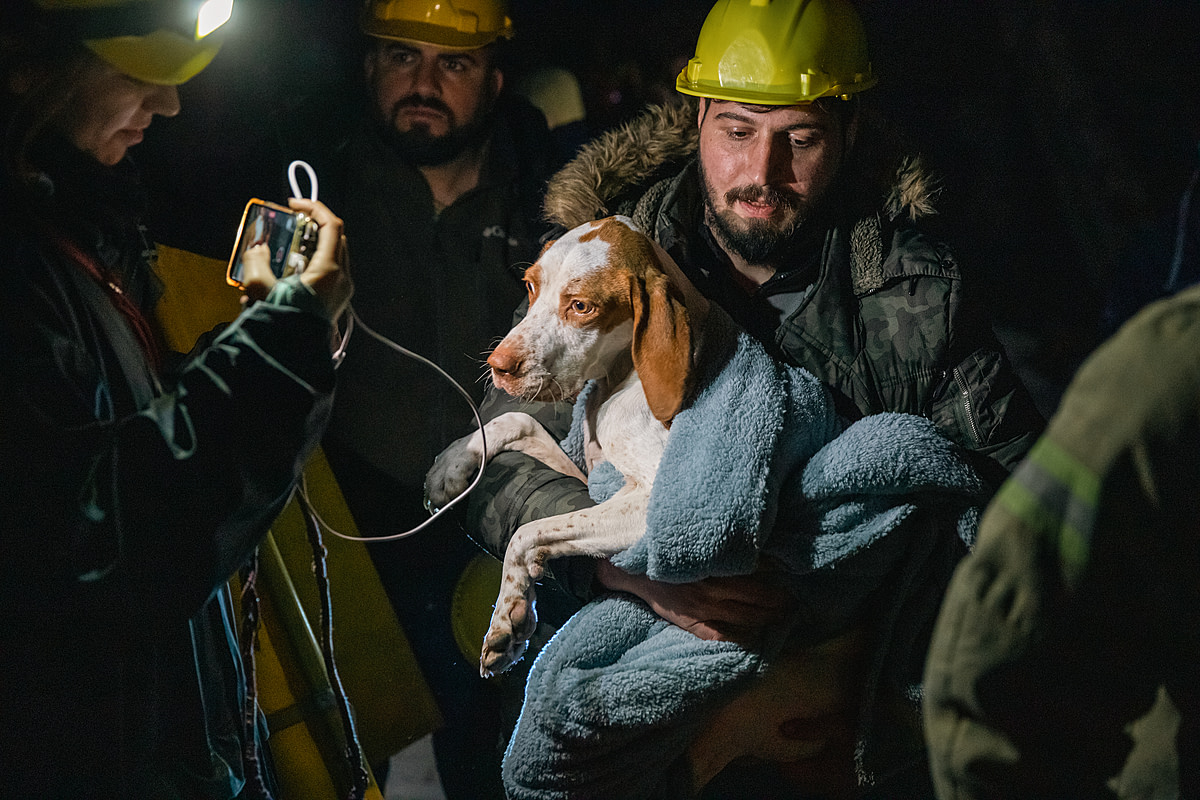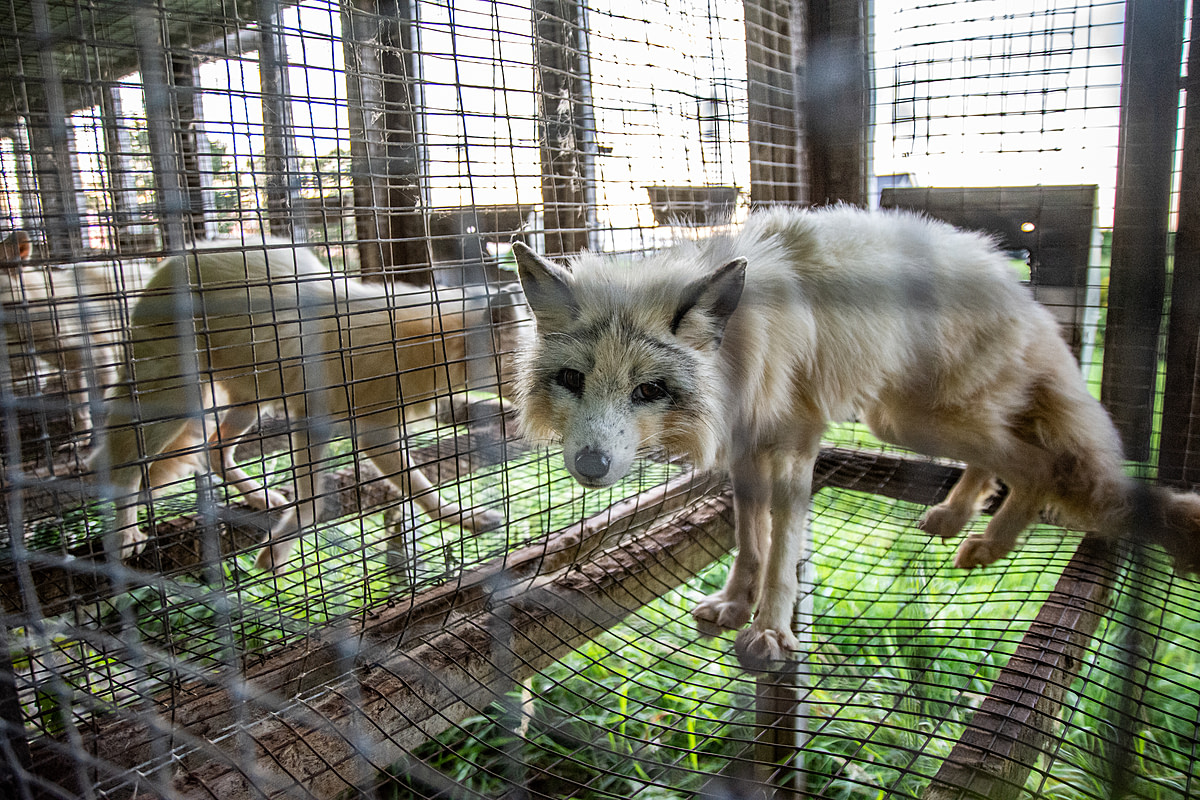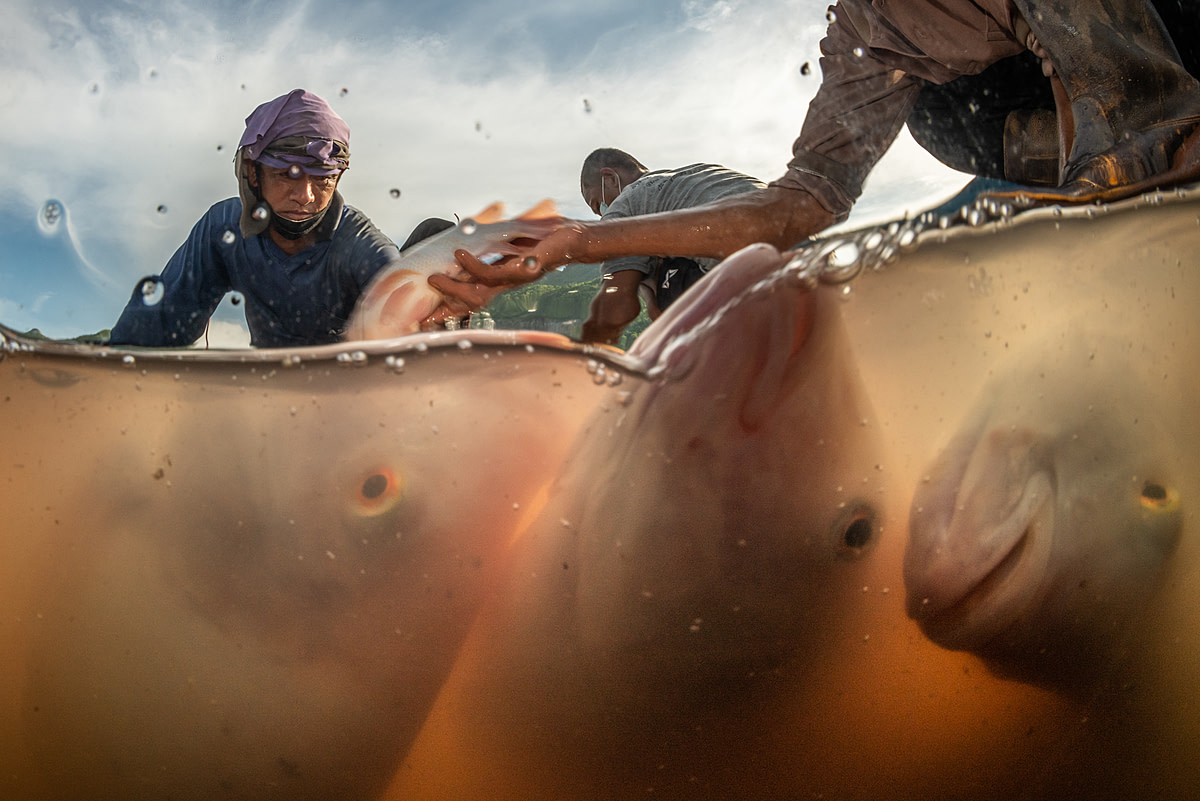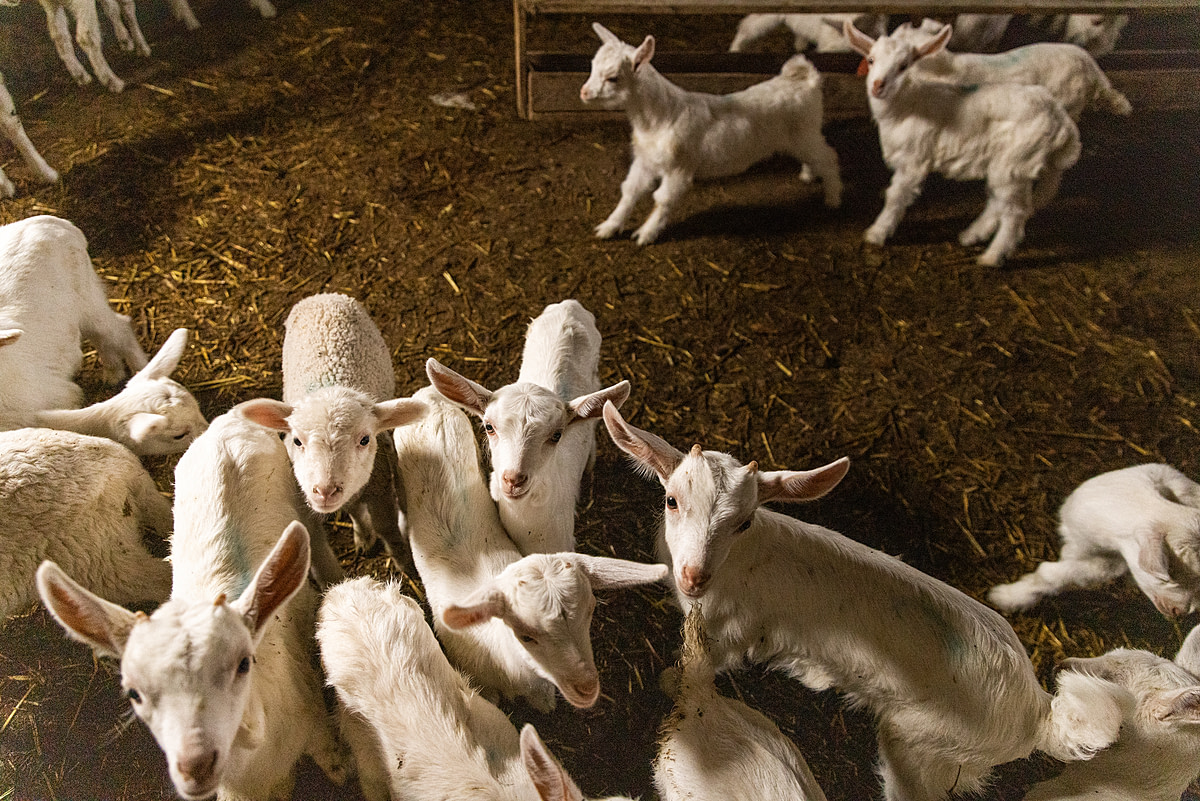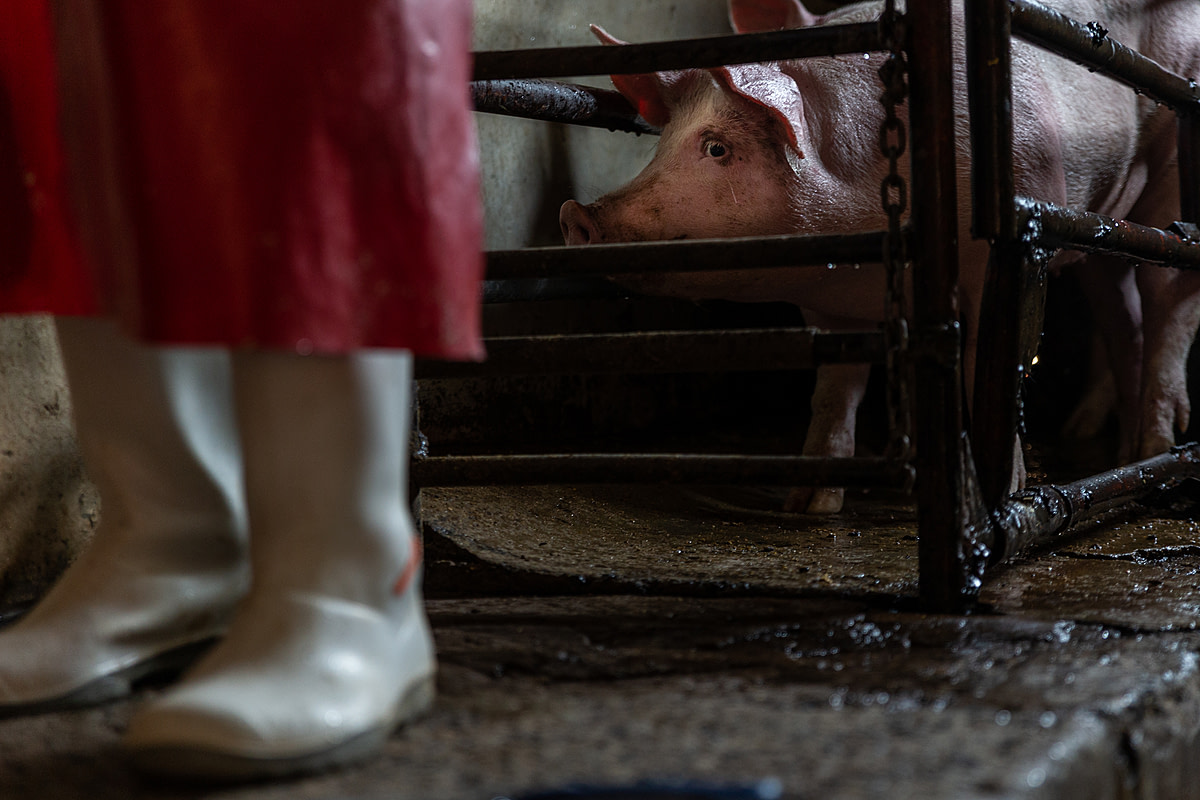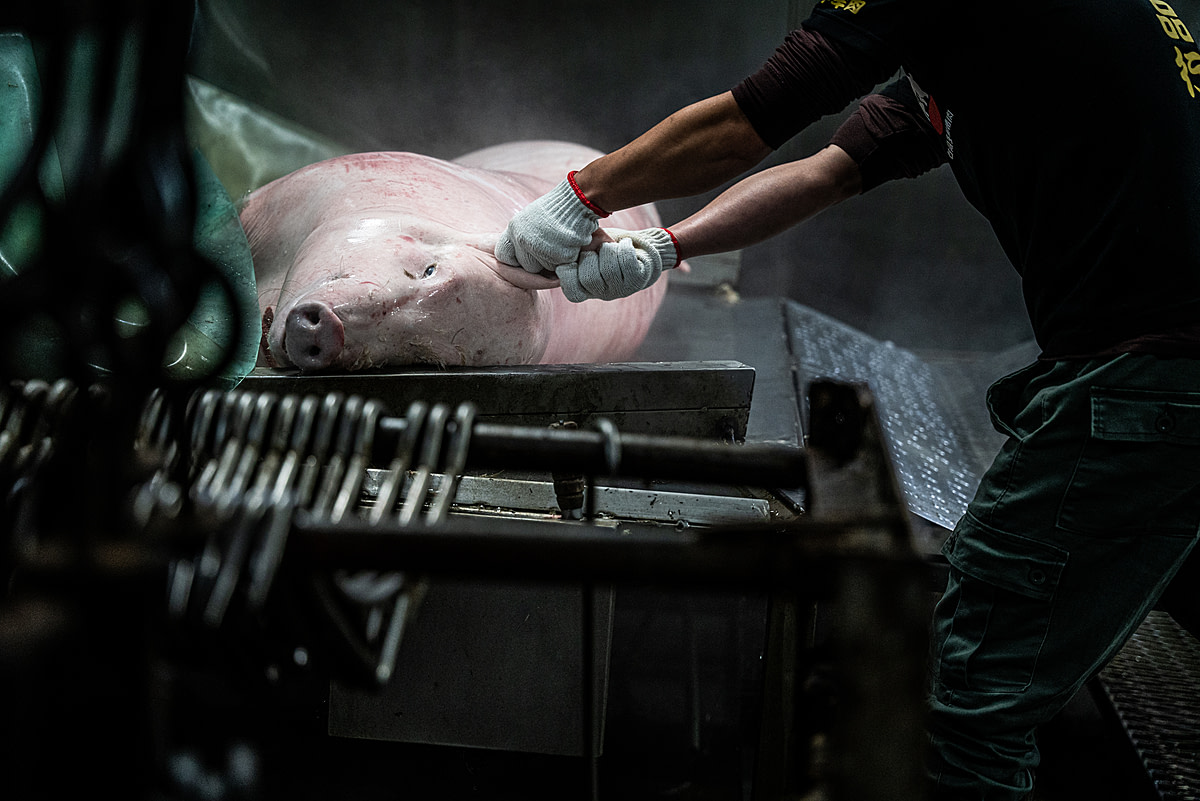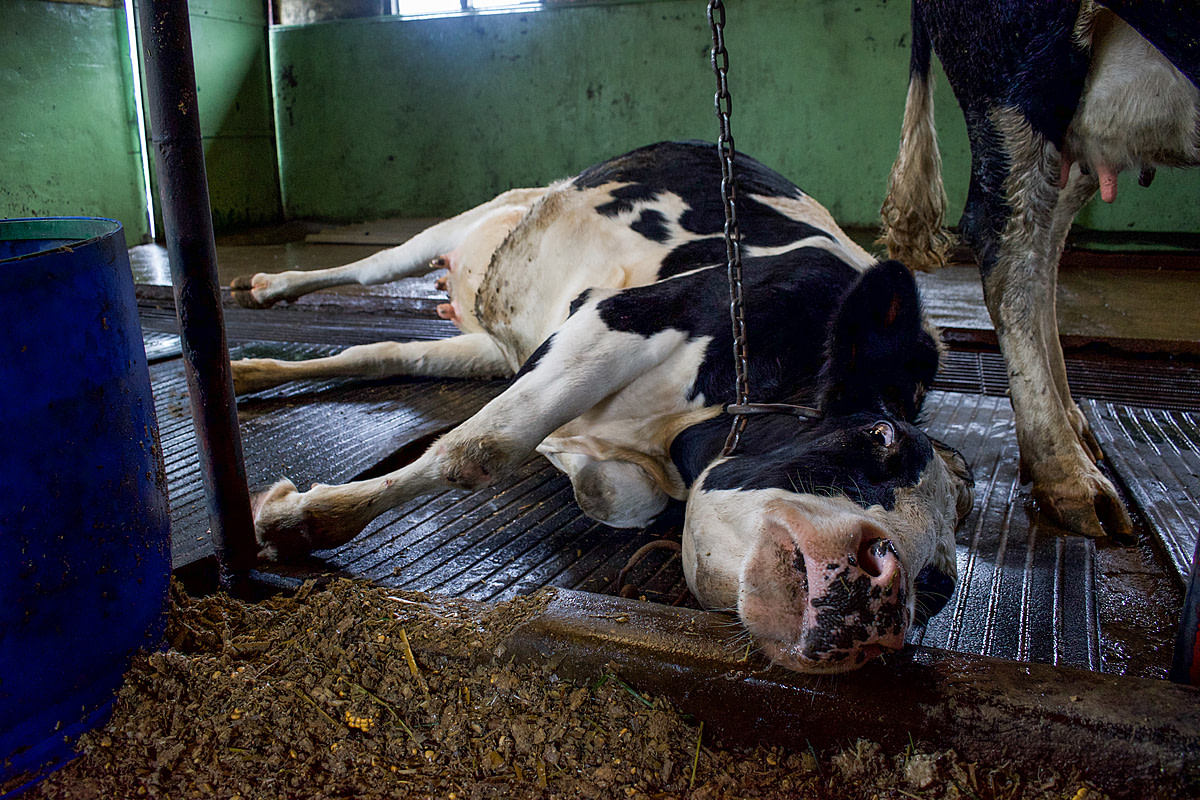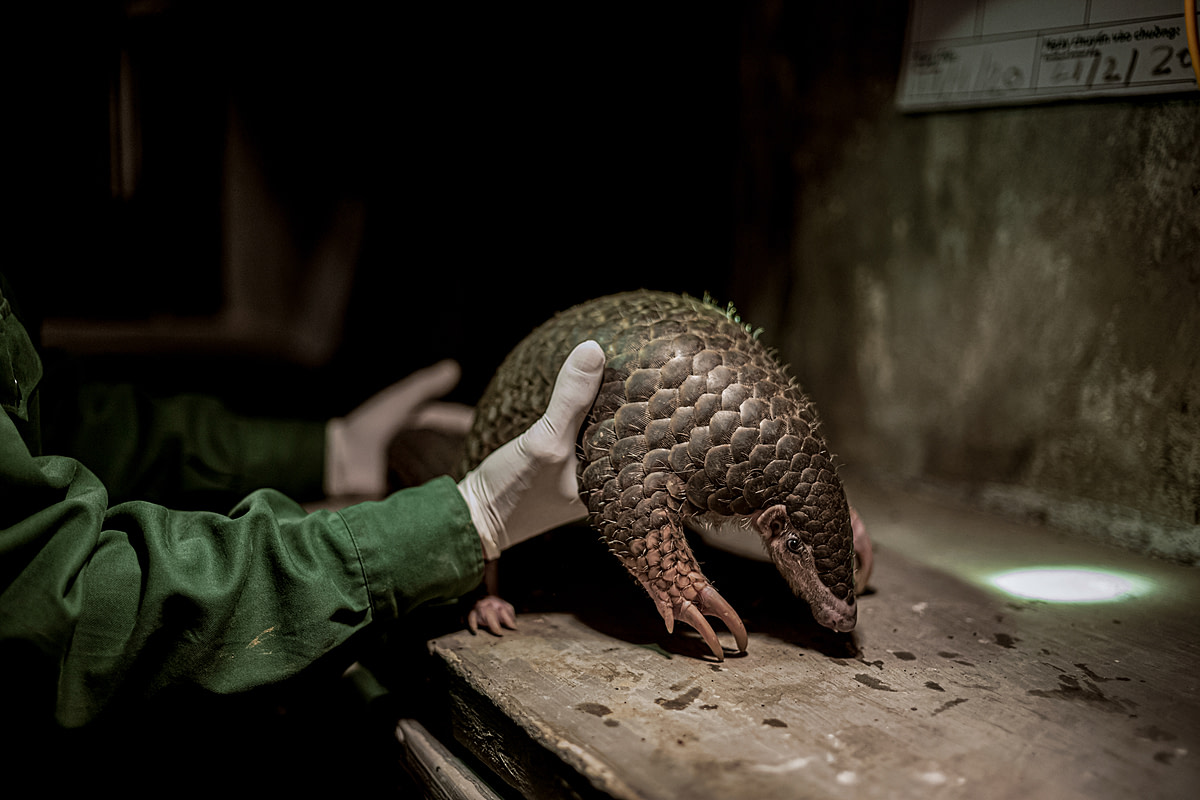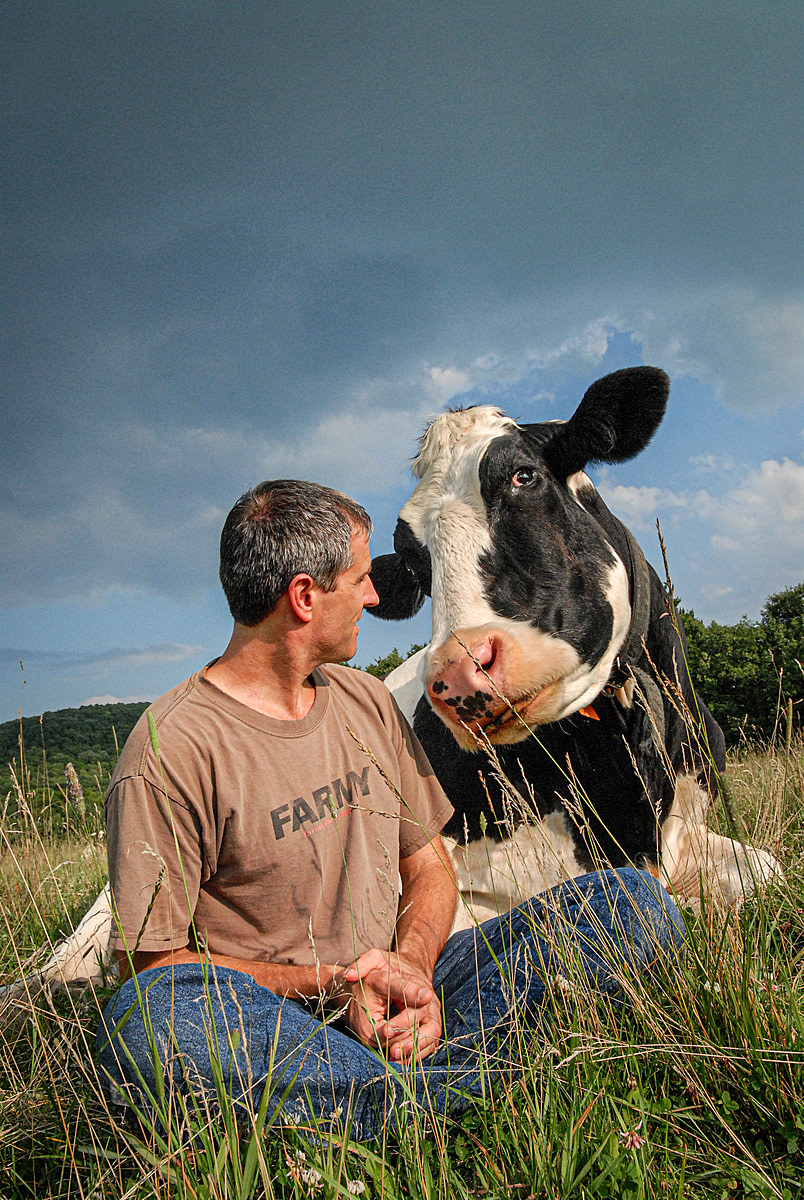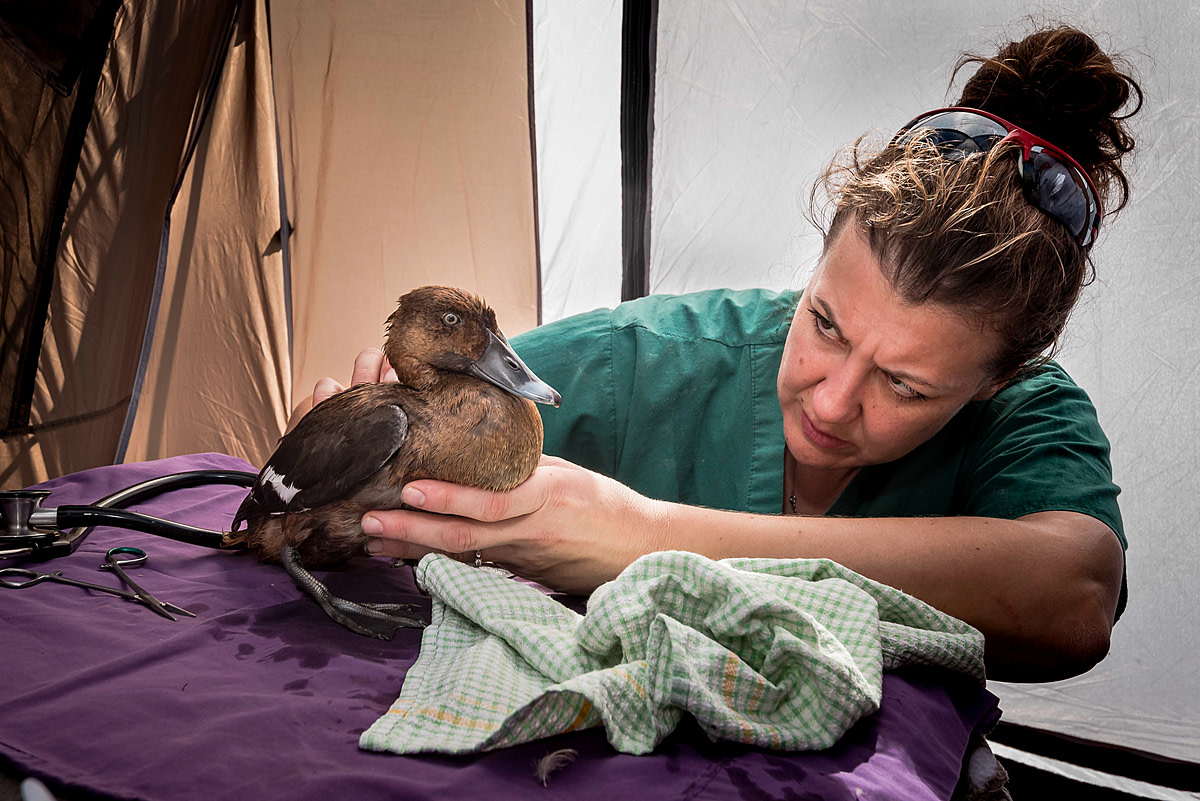For We Animals’s 4th anniversary, we’re celebrating 100 contributing photographers from around the globe.
Twenty five years ago, Jo-Anne McArthur took a photo in Ecuador of a capuchin monkey who was tied to a windowsill by a short chain, trained to pick-pocket tourists amused at the animal’s behaviour. This photo was the beginning of animal photojournalism: revealing the experiences of animals who live among us but who we fail to see as individuals.
What began as one woman and her camera is now 100 photographers telling animal stories. These photographers venture into farms, slaughterhouses, laboratories, zoos, wet markets and natural disasters to hold governments and industries accountable. Their work challenges cultural norms and pushes us to do better all around the globe.
Network Growth
Photographer Locations

To celebrate this milestone we’ve put together a selection of visuals, one from each of our contributors, to give you a sample of the incredible work they’re doing globally. These are challenging stories. They challenge us to look at where we fail animals and they challenge us to imagine a better world. These are also uplifting stories. Uplifting animals into our cultural fabric and uplifting us when we see them thrive. These are the 100 photographers bringing you animal stories.

“There is power in numbers, there is power in collaboration, there is power in telling these stories; and the more storytellers, the greater impact. People are finally beginning to consider the unseen, and we want to ensure these animal lives are documented in the most engaging, timely and effective ways possible. We Animals is that lens.” — Jo-Anne McArthur, We Animals Founder
A room with a view. Pigs in the modern meat industry are totally isolated from the outside world and too smart to be fooled by a painted mural of a rural scene. Netherlands, 2016.
Sabine Grootendorst / HIDDEN / We Animals
Wearing a biosecurity suit, animal photojournalist Jo-Anne McArthur enters a broiler chicken barn on a factory farm to document the conditions inside. Denmark, 2016.
Niels Vogensen / Anima / We Animals
Jo-Anne McArthur photographing a bovine inside an animal transport truck parked near the Turkish Border. Türkiye, 2018.
Miguel Endara / Vidara Films / We Animals








Two pigs stand nose to nose in flood waters while awaiting rescue at an Italian factory pig farm. Extreme weather in May 2023 caused mudslides and waterways to overflow, severely affecting numerous factory farms. This farm had no evacuation plan, and many pigs were trapped in the flood waters for days. Lugo, Emilia-Romagna, Italy, 2023.
Selene Magnolia / Essere Animali / We Animals
Following two massive February 2023 earthquakes, HAYTAP Animal Rights Federation and Istanbul Fire Department team members carry a mother dog from inside a damaged building. The team rescued the mother dog and her litter of puppies five days after the earthquakes struck the country. Turkiye, 2023.
Ozan Acidere / We Animals

“Every place, every animal and every human attached to a situation brings new and complex layers that must be peeled away with thought and consideration. Pushing myself to create images that spark conversation is always at the forefront of my mind when documenting.” — Molly Condit








A silver fox in a fur farm. Canada, 2014.
karol orzechowski / We Animals
A farmed fox stares into the camera from inside their barren wire mesh cage at a fur farm in Quebec. In the neighbouring enclosures other foxes pace atop the bare wire floor of their cages. Canada, 2022.
Balvik C. / We Animals









“The beauty of the natural world is what makes us so interested in documenting it and to experience it. But there is the other side of the coin as well, which needs to be amplified. And it is high time to highlight the destruction and demolition of natural resources. We aren’t living in silos separated from one another.” — S. Chakrabarti
Fish in open-net pens at a fish farm in Greece. This farm produces between 500 and 700 tonnes of fish each year. Greece, 2020.
Francesco Ceccarelli / Essere Animali / We Animals
A local female fishmonger deveins shrimps and prawns who were recovered from fishing bycatch. India, 2022.
Shatabdi Chakrabarti / We Animals
Red hybrid tilapia swim in the murky water of a densely crowded floating pen at a fish farm in Thailand. Some fish come to the surface to breathe which would seem to indicate that the oxygen density level in the water is quite low. Thailand, 2021.
Taichi Kaito / Sinergia Animal / We Animals
During a nighttime harvest at an Indonesian milkfish farm, workers stand in the murky water of a fish pond and haul in a harvesting net toward the pond’s banks. Indonesia, 2021.
Kasan Woles / Act For Farmed Animals / We Animals









“From early on, I started to take care of my choice of shots and lights. Shadows play a fundamental role in my photos. I believe that today we no longer need documentary images but photographs capable of involving viewers in the scene, giving back to the public the drama that animals have experienced.” — Stefano Belacchi
At an Indonesian market before the Eid al-Fitr holiday, a chicken investigates the body of a slaughtered chicken soaking in a tub of hot water before being defeathered. As Eid al-Fitr nears, customer demand for chicken meat markedly increases preceding the holiday celebrations. Pagi Market, Pangkalpinang, Bangka Belitung, Indonesia, 2023.
Resha Juhari / We Animals
A tractor dumps a load of dead turkeys into a truck during a disposal operation at a farm with an avian influenza (H5N1) outbreak. Norfolk, United Kingdom, 2022.
Ed Shephard / Generation Vegan / We Animals
Thousands of dead chickens are removed from a shed by conveyor belt and loaded into a truck at a factory farm in Iowa. USA, 2022.
Direct Action Everywhere / We Animals









“Animal photojournalism is to look closely at the lives of animals and record images in order to raise and create awareness in people against legal and normalized animal exploitation all over the world. Through the photographs I have created in this field, I want to remind through an empathetic encounter the forgotten bond between animals and humans as they become adults.” — Deniz Tapkan Cengiz
Baby goats in a holding pen on a goat dairy and meat farm. This farm separates the kid goats from their mothers until after the mothers are fed. Once allowed to reunite, mothers and babies must find each other by searching and recognize each other by voice and smell. The smaller goats have trouble finding their mothers. Canakkale, Turkiye, 2023.
Deniz Tapkan Cengiz / We Animals
A terrified pig stares wide-eyed through the bars of a killing pen toward the knife that will slice open her throat seconds later. The knife lies next to the feet of a slaughterhouse worker as he loads a bullet round into a gun. Zambia, 2022.
Matt Armstrong-Ford / We Animals
A broiler chicken in an intensive chicken farm lies trapped on their back, unable to right themselves. UK, 2021.
Christopher Shoebridge / VFC / We Animals
A horse convulses whilst bleeding out in a slaughterhouse. Argentina, 2018.
Voicot / We Animals








“As a documentary photographer, I don’t interfere in the scene and mostly try to shoot from the animals’ point of view. There is often little time and a lot of stress involved in the photography, but I compose in such a way that the atmosphere of the place or the victim is transferred to the viewer and the emotions are felt.” — Lukas Vincour
Pangolins are largely covered in scales made of keratin-the same material found in human fingernails. Vietnam, 2020.
Kindred Guardians Project / We Animals








A Hawaiian day octopus interacts with a few toys in a small, barren tank at Kanaloa Octopus Farm, which captures and conducts breeding experiments on octopuses for the aquaculture industry. Kailua-Kona, Hawaii, USA, 2022.
Laura Lee Cascada / The Every Animal Project / We Animals
An aerial view of a sled-dog operation in Canmore, Alberta. Some kennels in Canada can house more than 250 dogs, who spend most of their lives on a short tether, pacing in circles. Summer means even more time on chains for these dogs as they are not pulling sleds. Canada, 2021.
Frank Metivier / We Animals
A live cat howls and stares in distress from within a cage at a slaughterhouse in Hanoi, Vietnam. Many cats are held here in such cages, and each cat is destined to be killed and sold as “tiểu hổ” or cat meat. Vietnam, 2022.
Napat Wesshasartar / Asia for Animals Coalition / We Animals

“I normally set aside my emotions and focus on the assignment, however, when I have to go through all of the footage that I shot, it’s heartbreaking.” ― Napat Wesshasartar







Seth Tibbott, founder of Tofurky, offers a slice of Tofurky to a turkey at Wildwood Farm Sanctuary. USA, 2021.
Ziad Elkawlak / Bridge City Media / We Animals
Miyoko Schinner shows off her tattoo reading “phenomenally vegan” at Rancho Compasión, her animal sanctuary. USA, 2021.
Henry Hopkins / H2 Video / We Animals

“To my fellow photographers, we have a very powerful tool in our hands and knowledge with which we could make great changes. Photography lasts through time and at this moment we are showing the current reality and later it will also be part of history.” — Gabriela Penela








Gene Baur and Opie at Farm Sanctuary. Gene rescued Opie from a pile of dead animals when he was a calf. USA, 2007.
Jo-Anne McArthur / We Animals
Veterinarian (Natasha Bassett) examines a female Hardhead duck (Aythya australis) for shotgun wounds in a triage tent that was set up on the banks of a lake during the opening of duck hunting season in Victoria. Australia, 2017.
Doug Gimesy / We Animals
View more work from our network of photographers via the We Animals stock platform, which offers 30,000+ free visuals for changemakers.




